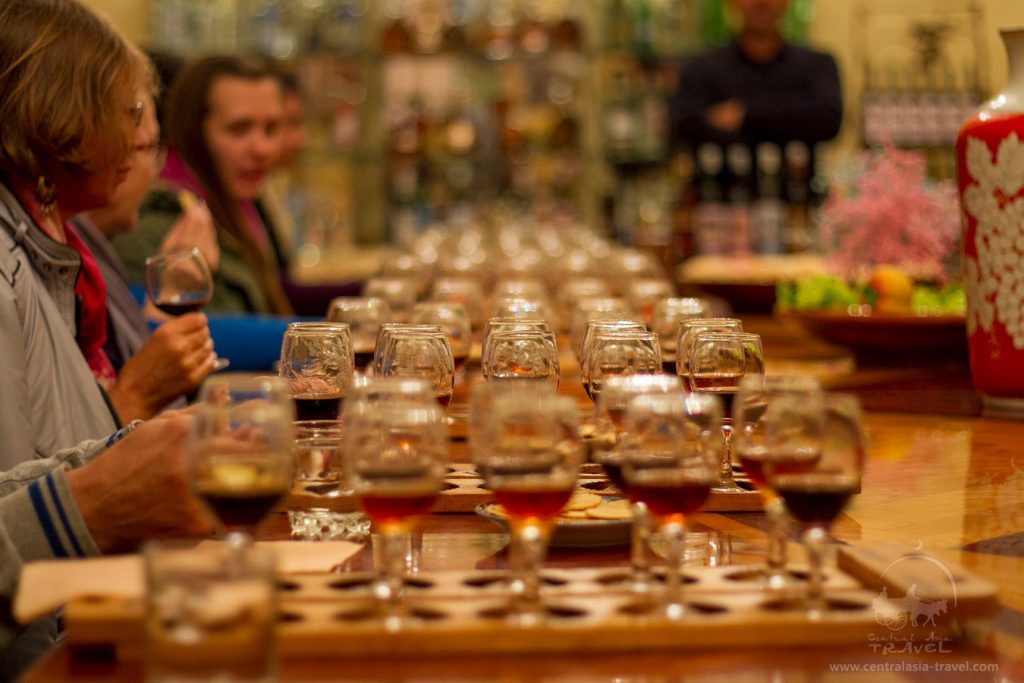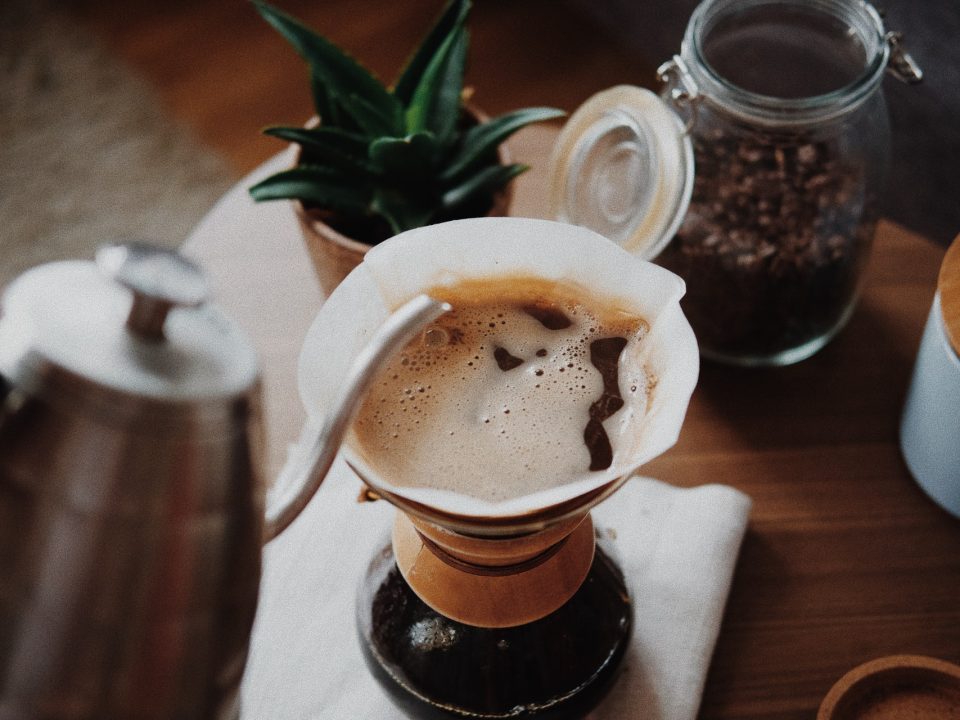Samarkand’s rich history and stunning UNESCO-listed monuments are no secret – Registan Square, the marvellously tiled Shah-i-Zinda necropolis and the old town draw people from around the world. In the colonial quarter, hidden among European structures from the late 19th century, you’ll find Khovrenko Winery, located in an old merchant mansion that belonged to Central Asian winemaking pioneer, Dmitry Lvovich Filatov. Today, visitors can explore Filatov’s mansion and visit the winemaking museum and tasting hall to sample Samarkand wines.
1. Winemaking in Samarkand through the ages
The sweet wines of Samarkand have been known since the 4th century BC, when Alexander the Great conquered the city, then part of legendary Sogdiana. Although wine was prohibited for a period under Islamic rule, a number of those early artisanal wineries kept working, perhaps ‘helping’ medieval Uzbek poets and scholars to expand their creativity.
The 11th century polymath Ibn Sina (Avicenna) later outlined the negative and positive effects of wine in his Canon of Medicine. Modern winemaking in Uzbekistan began in 1868, when ambitious Russian merchant Dmitry Filatov planted new vineyards and started making wine in Samarkand. More than 150 years later, his winery is still in operation, welcoming visitors to tour the vineyard and sample its delights. Dmitry Filatov had remarkable ingenuity and inexhaustible energy, and in the mid-19th century, when the Imperial Russian Army began its advance in the Central Asian region, Filatov got an idea. He was well aware of the needs of Russian soldiers and remembered the proverb: “War is war, but lunch is on schedule.”
So he loaded up a caravan of camels with alcohol and literally followed the Tsarist troops under the command of General M.G. Chernyaev. After the Russians captured Tashkent in 1865, Filatov was among the first to found a trading enterprise here. As the troops moved south and east and began to occupy Bukhara, Khiva and Kokand, Filatov followed, opening trading houses in all three cities that were designed to meet the needs of the first Russian settlements. Using his experience in producing and trading alcoholic beverages during the Russian campaigns, Filatov decided to start making wine in the region on a more industrial scale. Not wanting to depend on suppliers farther afield, he bought up several tracts of land and established his own vineyards. By 1900, his distillery was producing over 70,000 buckets of assorted wines. Filatov’s estate on Chernyaev St (modern Mahmud Kashgari St) contained houses, wine cellars and vineyards, occupying more than 40,000 sq m.
Before converting to the metric system, Russian alcohol production was quantified in ‘buckets’: one bucket was roughly 12.3 litres or 1/40th of a barrel. At the turn of the 20th century, Filatov’s winery was producing about 861,000 litres, or 3826 modern barrels of wine.

2. Soviet Wine
After Dmitry Filatov’s death in 1914, and the establishment of Soviet rule a few years later, the winery was taken over by scientist, winemaker and chemist Mikhail Khovrenko. Khovrenko was the first professor of winemaking in Russia. He systematised the types of wine being made, and cultivated several new varieties of grapes, which are still used to produce Uzbek wines. Khovrenko tested and introduced new technologies for wine production, and developed technological schemes for such vintage wines as Gulyakandoz, Shirin, Cabernet Liqueur, Aleatico, Uzbekiston and Farhad. Over the years, the winery was renovated several times, and Filatov’s caches were discovered, with reconstructions repeatedly revealing huge stores of the founder’s best wines. At international auctions, Filatov wines are well regarded by connoisseurs and often go to collectors’ cellars at high prices.

3. Uzbek Wines: Style and Structure
With its dry, sunny climate, Uzbekistan is a fertile place for cultivating grapes. Across much of Europe, grape sweetness averages 14-18% sugar (fructose), while the varieties grown in the Samarkand region are on average 24-26%, sometimes reaching a maximum of 35%. Not satisfied with only local varieties, despite the difficulties and considerable costs, Filatov imported and cultivated Italian, American, Caucasian and Crimean grapes in Samarkand. Because of this, the winery has long used grape varieties like Saperavi, Riesling, Petit Verdot, Cabernet Sauvignon and Hungarian Muscat. Filatov constantly improved the industry, travelling to France, Germany, Hungary and Switzerland, and studying winemaking in the Caucasian and Crimean regions of Russia. As a result of these trips, Filatov installed modern European machinery at his wineries, and introduced advanced methods and technologies for wine production.
4. A Tasting Tour
Today, Khovrenko Winery processes an average of 16,000 tons of grapes per year and produces several types of wines, as well as brandy and vodka. Several vintages are placed in special cellars for long-term aging, and individual wine sets go to auction. The winery is open to visitors for a tour of the vineyards and a museum, as well as opportunities for sampling the wines. The Filatov Winemaking Museum catalogues the history of the vineyard and Samarkand winemaking, and showcases the many international awards that the winery has won over the years. A typical tasting session in the winery’s dedicated tasting room includes 10 sampler glasses, ranging from mild whites to a unique balsam made from a variety of herbs and only released every 10 years. You can toddle through the onsite shop, which offers all of the wines to take home at reasonable prices.













